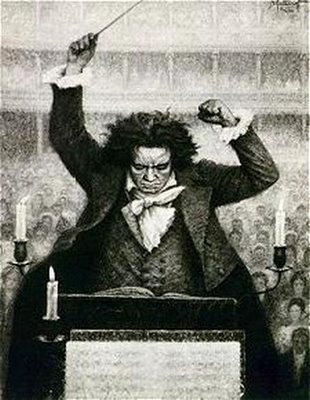Composed between 1800 and 1803, this work can be viewed as both the culmination of the first phase of Beethoven’s orchestral writing and as a major advance towards the work of his “heroic” period.
While outwardly classical in style, this symphony is full of drama, contrast and lyricism. It begins in a grand style, with an opening Adagio based on rising and falling scale motifs. The opening section segues into a sparkling Allegro con brio starting in the lower strings, with dramatic drive and dynamic contrasts.
The lovely theme of the second movement Larghetto is one of the most recognizable passages in classical music – a lyrical rising melody played first by the strings in a high register, and then echoed by the winds. A short development section uses the opening theme as a backdrop to evoke an unsettled and then stormy mood before returning to the opening’s calm lyricism.
The joyous Scherzo has sudden dynamic contrasts and a lovely Trio featuring the winds.
The symphony concludes with a brilliant Allegro molto, which is based on a fiery short opening string motif and punctuated with a dramatic stop. Rich harmonic improvisation and use of the opening motif characterize this movement, which ends with a triumphant flourish.
Symphony No. 2 in D Major
Op. 36
Composed in 1801-02
By Ludwig van Beethoven






